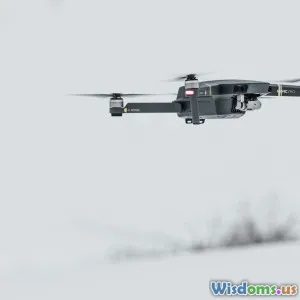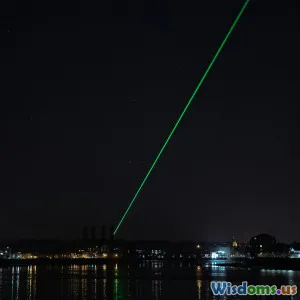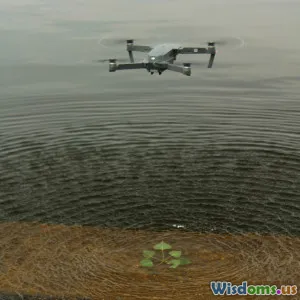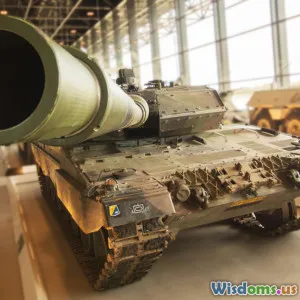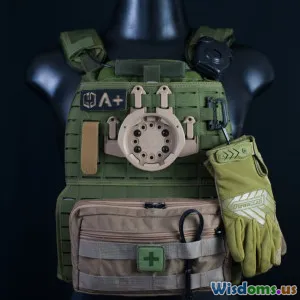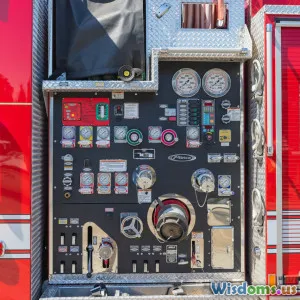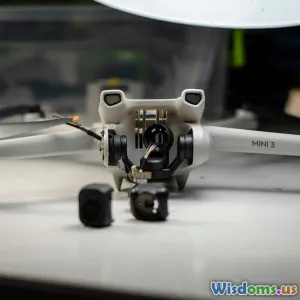
The Real Cost Behind Maintaining a Modern Combat Drone Fleet
9 min read Explore the hidden costs of sustaining a modern combat drone fleet beyond initial purchase. (0 Reviews)
The Real Cost Behind Maintaining a Modern Combat Drone Fleet
In recent years, military technology has experienced a paradigm shift with the increasing reliance on unmanned aerial vehicles (UAVs), specifically combat drones. While headlines often focus on the impressive capabilities or devastating strikes executed by these high-tech machines, the less visible reality is the intricate web of ongoing costs that underpin sustained operations. The true price tag behind maintaining a modern combat drone fleet encompasses more than just the initial purchase; it involves complex factors such as routine maintenance, software updates, operator training, and logistical support.
This article delves deep into what it really takes to keep these crucial assets battle-ready and efficient, drawing from defense budgets, expert opinions, and concrete examples to peel back the layers of expense and effort.
Understanding Initial Costs vs. Ongoing Expenses
Purchased often with large upfront investment — in some cases, hundreds of millions of dollars per platform — combat drones like the MQ-9 Reaper or the Israeli Heron TP symbolize cutting-edge military capacity. However, once delivered, fleets encounter a slew of continuous costs to stay mission capable.
Example: The U.S. Air Force’s MQ-9 Reaper drone was reported to cost approximately $16 million per unit. But acquisition is just the starting point. According to a 2021 Congressional Budget Office (CBO) report, operating and support costs can nearly double the lifetime expenses of these drones.
1. Maintenance and Repair: A Continuous Financial Drain
Combat drones fly thousands of hours per year, leading to mechanical wear that demands scheduled and unscheduled maintenance. Elements such as engine performance, airframe integrity, avionics, and sensor efficacy all require rigorous upkeep.
According to defense contractor General Atomics, typical maintenance cycles for the MQ-9 include pre-flight inspections, post-flight evaluations, and mid-life overhauls that can cost millions per drone.
Moreover, the harsh environments drones operate in—extreme temperatures, dusty deserts, or maritime conditions—introduce corrosion and component stress that escalate maintenance demands.
Insight: For instance, the U.S. Air Force reported an average cost of around $1,100 per flight hour for the MQ-9 Reaper. This figure includes maintenance, fuel, and operational expenses.
2. Software, Cybersecurity, and Systems Upgrades
The brain of any modern combat drone is its software suite managing flight control, targeting, communications, and data security. Unlike traditional aircraft, drones require frequent software updates to enhance capabilities and patch vulnerabilities.
Cybersecurity is paramount given the threat of hacking attempts that could compromise sensitive missions or leave drones vulnerable to control loss. Consequently, defense organizations allocate substantial budgets towards continuous software development, testing, and cyber resilience.
Case study: The U.S. Department of Defense’s initiative for agile software updates on drones includes multi-million dollar contracts awarded to companies specializing in advanced secure communications and AI-assisted targeting algorithms.
3. Operator Training and Human Capital Investment
While drones operate without pilots on board, highly skilled personnel remote-control these systems, demanding extensive and continuous training.
Training programs are costly, involving flight simulators, mission rehearsals, and interdisciplinary knowledge in aeronautics, electronics, and cybersecurity. Additionally, keeping operators proficient amid evolving combat scenarios requires regular retraining and exercises.
Data Point: A single MQ-9 Reaper pilot requires approximately 50–60 flight hours annually just to maintain currency, supplemented with simulator time that costs thousands per hour. This means personnel costs constitute a significant portion of the overall maintenance budget.
Increased demand for operators today also strains recruitment pipelines, requiring incentives and benefits to attract and retain qualified individuals.
4. Logistics and Supply Chain Complexities
Ensuring spare parts, batteries, sensors, and specialized equipment are readily available involves an intricate logistics network.
Delays in supply chains can ground fleets for extended periods, potentially risking mission success. The international nature of drone components complicates procurement—sanctions, export controls, or geopolitical tensions may impact availability.
Example: In 2018, reports indicated the Israeli Defense Forces (IDF) faced temporary challenges sourcing critical parts for their Heron drones due to international supply chain disruptions.
Stockpiling components and maintaining local supply chains adds further to financial burdens but is necessary for operational readiness.
5. Operational Risks and Lifecycle Replacement
Combat drones face operational hazards including enemy fire, accidents, and electronic warfare interference. Replacing lost or damaged units quickly is costly — often exceeding millions per airframe.
Furthermore, rapid technology advancements mean that fleets often become technologically obsolete within 10–15 years, necessitating investment in next-generation platforms and potentially expensive retrofitting.
According to a RAND Corporation analysis, maintaining technological superiority and a ready fleet over two decades could multiply initial drone investment by a factor of 3 to 5.
6. Hidden Environmental and Regulatory Costs
Emerging concerns about environmental impact and airspace regulation compliance introduce new hurdles. Battery disposal, noise pollution, and integration with civilian airspace increasingly raise both costs and public scrutiny.
Adhering to regulatory frameworks calls for additional certification, training, or infrastructure updates, increasing the total cost of drone fleet upkeep.
Conclusion: Beyond Purchase Prices—The Full Spectrum of Costs
The myth that combat drones represent a low-cost alternative to conventional aircraft overlooks the scale and complexity of their ongoing support requirements. The true cost behind maintaining a modern combat drone fleet is a multifaceted reality, combining maintenance, software, training, logistics, risk management, and evolving environmental considerations.
As military forces worldwide continue to invest in these high-value assets, understanding these invisible yet substantial expenses is vital for policymakers, defense planners, and the public. This knowledge paves the way for smarter procurement strategies, more sustainable operations, and improved cost-benefit analysis in future military aviation projects.
In essence, the maintenance of modern combat drones represents a dynamic, high-stake venture that extends far beyond the assembly line—one that calls for strategic foresight and ongoing investment to remain battle-ready and effective.
References
- Congressional Budget Office. (2021). ‘Costs of Operating MQ-9 Reaper Drones’.
- RAND Corporation. (2019). ‘The Future of Unmanned Aircraft Systems’.
- General Atomics Aeronautical Systems. (2020). Technical Manuals and Maintenance Schedules.
- U.S. Air Force Public Affairs. (2022). ‘MQ-9 Reaper Flight Hours and Costs Update’.
- Defense News. (2018). ‘Supply Chain Challenges for Israeli Drone Fleets’.
- Defense Advanced Research Projects Agency (DARPA). (2023). Cybersecurity in UAV Operations.
Rate the Post
User Reviews
Popular Posts










